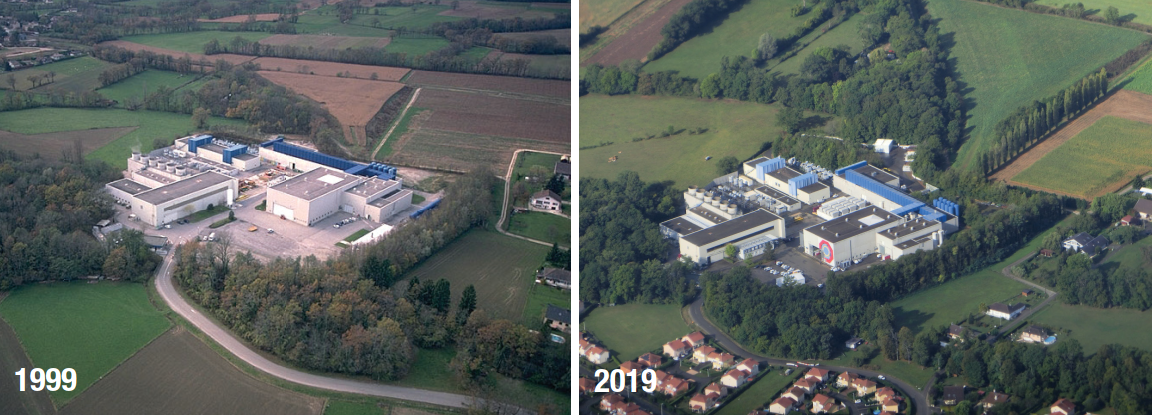Managing CERN's noise footprint
Managing noise produced by CERN’s installations is important in order to minimise nuisance to the Organization’s immediate neighbours. Consequently, the Organization has always taken measures to minimise its noise footprint and ensure conformity with Host State norms. In the past, most CERN sites were in rural areas. However, with increasing urbanisation, housing has been constructed near to some sites, requiring action to be taken.
In 2014, an extensive noise measurement campaign was undertaken to establish a baseline and determine a course of action. Readings were taken at the perimeter of CERN sites, giving priority to those with homes nearby. This allowed targeted investment to be made in noise barriers and low-noise equipment. As a result, CERN restricts noise at its perimeter to the limits specified by French norms of 70 dB(A) during the day and 60 dB(A) at night at worst; roughly equivalent to a running shower and conversational speech respectively.
The CERN noise map is provided to local authorities so that they can plan new developments to limit noise experienced by future residents. CERN recommends no construction within a 40 dB(A) perimeter, equivalent to the sound made by a home computer. The noise map and accompanying documentation are available for consultation through local town halls.
 |
|
Urbanisation has led to housing being constructed near to CERN sites such as point 2 of the LHC ring, home to the ALICE experiment. (Image: CERN) |
IN FOCUS
José Miguel Jiménez is CERN’s Executive Officer for Noise Footprint Policy and Implementation Strategy.
— What were the objectives of the 2018 measurement campaign?
JMJ: Following a long maintenance shutdown, we resumed operations in 2014 under similar circumstances to 2012 operation. Some residents of new housing developments near CERN sites noticed a change in the noise environment. We therefore produced detailed maps of our noise footprint, allowing us to quantify it, and to invest in noise reduction measures where necessary. We initially focused on sites with housing developments nearby, but in 2018 we completed the campaign for all CERN sites, allowing local authorities to plan future developments accordingly.
— What did the noise maps reveal?
JMJ: Our measurements showed that noise levels have not changed since the early 1990s, and are low by urban standards. Nevertheless, we have invested 0.7 MCHF to reduce noise in areas where people live.
— What is planned for the future?
JMJ: Minimising CERN’s noise footprint for our neighbours is a priority. We measure annually to ensure we remain at or below current levels, and when restarting our facilities, which requires increased levels of activity, we monitor in real time so that if noise levels rise, we can intervene immediately. We also have an agreement with local authorities stipulating that developers must be informed about the CERN noise footprint if constructing close to the 40 dB(A) threshold, and discouraged from constructing within that zone.
Learn more
Questions regarding this report may be addressed to Environment.report@cern.ch.
